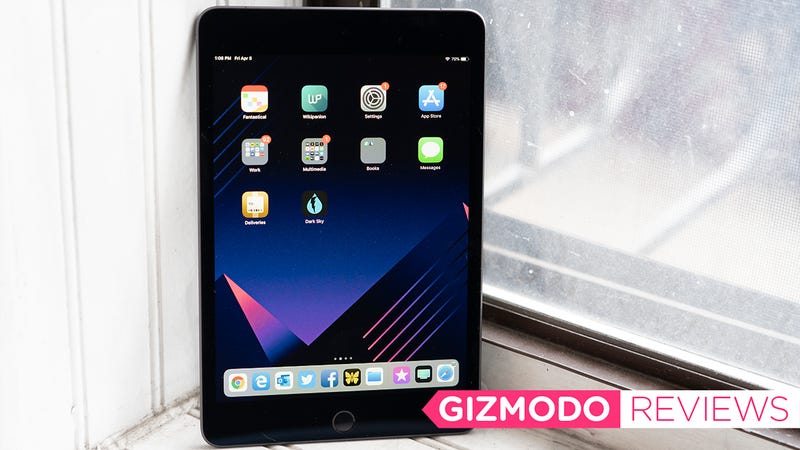With no warning and little explanation, Netflix has removed the easiest way to sling its shows from one Apple device to another: AirPlay.
Netflix confirmed to The Verge that it pulled the wireless casting feature this past week, due to what it’s calling a “technical limitation.” But it’s not the kind of technical limitation you’d think.
You see, Apple recently partnered with most of the major TV brands to allow AirPlay 2 to send shows directly to their 2019 TV sets with a firmware update later this year, but a Netflix spokeperson tells me AirPlay 2 doesn’t have digital identifiers to let Netflix tell those TVs apart — and so the company can’t certify its users are getting the best Netflix experience when casting to those new sets.
So now, it’s throwing out the baby with the bathwater and pulling the plug on AirPlay, period. “We can’t distinguish which device is which, we can’t actually certify the devices... so we’ve had to just shut down support for it,” a Netflix spokesperson says.
To be clear, that means Apple TV set-top box users can no longer cast Netflix, either.
Here’s the company’s official statement:
We want to make sure our members have a great Netflix experience on any device they use. With AirPlay support rolling out to third-party devices, there isn’t a way for us to distinguish between devices (what is an Apple TV vs. what isn’t) or certify these experiences. Therefore, we have decided to discontinue Netflix AirPlay support to ensure our standard of quality for viewing is being met. Members can continue to access Netflix on the built-in app across Apple TV and other devices.
As spotted by MacRumors earlier today, the company’s official support page now includes this phrase: “Airplay is no longer supported for use with Netflix due to technical limitations.”
:no_upscale()/cdn.vox-cdn.com/uploads/chorus_asset/file/16012588/airplay_netflix_dropped.jpg)
It’s a little weird and misleading, though, because we’re not talking about a situation where the technology doesn’t work — apparently it just doesn’t look quite as nice as Netflix wanted, and Netflix, Apple and the TV manufacturers can’t be bothered to fix it.
Maybe Netflix wasn’t prepared for a new wave of AirPlay 2-enabled TVs, and can’t justify spending the technical resources to upgrade its AirPlay implementation to support them properly. Maybe it’s Apple or Samsung, LG, Vizio and company who can’t justify the spend to fix the “limitation.” Maybe Netflix will even reinstate support after things get figured out, though a spokesperson strongly suggested to me that the ball is in Apple’s court now. Apple declined to comment.
Without a fuller explanation, it’s hard to resist thinking that Netflix is intentionally snubbing Apple for some reason, perhaps to build a wall around its subscribers, or perhaps to gain more negotiating leverage. (Netflix denies this: “It’s not a business competition play.”)
But both Apple and those TV manufacturers want to be able to use Netflix to sell fancy new AirPlay 2-enabled TVs to users, so it’s in their interests to make things work. Why aren’t they?
There is a strong potential reason for an Apple-Netflix spat: Netflix recently decided it wasn’t going to be part of Apple’s new TV Plus subscription video service, preferring to stay a competitor.
Reed Hastings confirms that Netflix won't be a part of the new Apple video hub announced next week. "Apple’s a great company. We want to have people watch our shows on our services.”
— Peter Kafka (@pkafka) March 18, 2019
And it wouldn’t be the first time we’ve seen a cold war between two companies who want control over streaming TV users — Amazon stopped stocking Google’s Chromecast for three years, using its own platform in an anti-competitive way, while it refined its own rival Fire TV products.
It’s true that most smart TVs already have Netflix built-in these days, and there’s no shortage of other ways to get that content on your TV screen. Unfortunately for Apple users, one of the most convenient ways is now winking out.
https://www.theverge.com/2019/4/6/18298146/netflix-confirms-it-yanked-airplay-support-wont-let-you-beam-shows-to-apple-tvs-anymore
2019-04-06 17:30:18Z
52780262187270

:no_upscale()/cdn.vox-cdn.com/uploads/chorus_asset/file/16010454/es2_lifestyle_03.jpg)
:no_upscale()/cdn.vox-cdn.com/uploads/chorus_asset/file/8645119/v_8A0A9683.jpg)
:no_upscale()/cdn.vox-cdn.com/uploads/chorus_asset/file/6979151/jbareham_160818_1183_0072_02.0.jpg)






